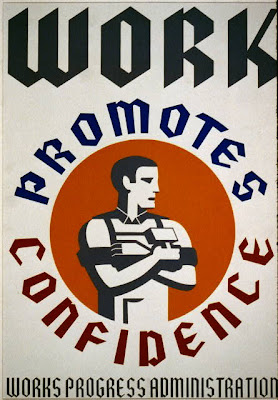 Keith Haring: 1978-1982, the first large-scale exhibition to explore Haring’s early career, will be presented at the Brooklyn Museum from March 16 through July 8, 2012 [note date change]. Tracing the development of the artist’s extraordinary visual vocabulary, the exhibition includes 155 works on paper, seven experimental videos, and over 150 archival objects, among them rarely seen sketchbooks, journals, exhibition flyers, posters, subway drawings, and documentary photographs.
Keith Haring: 1978-1982, the first large-scale exhibition to explore Haring’s early career, will be presented at the Brooklyn Museum from March 16 through July 8, 2012 [note date change]. Tracing the development of the artist’s extraordinary visual vocabulary, the exhibition includes 155 works on paper, seven experimental videos, and over 150 archival objects, among them rarely seen sketchbooks, journals, exhibition flyers, posters, subway drawings, and documentary photographs.
“We are delighted to have this exceptional opportunity to present this groundbreaking exhibition of these dynamic works created by one of the most iconic and innovative artists of the late twentieth century as his formidable talents emerged,” comments Brooklyn Museum Director Arnold L. Lehman. “The works of art and the accompanying documentary material place in new perspective the development of this unique talent.”
The Brooklyn presentation of the exhibition, which was organized by the Contemporary Arts Center, Cincinnati, Ohio, and the Kunsthalle Wien, Austria, will feature approximately thirty-one additional works on paper, of which thirty are black-and-white subway drawings, as well as a 1978 scroll Everyone Knows Where the Meat Comes From. It Comes From the Store.
The exhibition chronicles the period in Keith Haring’s career from the time he left his home in Pennsylvania to attend New York’s School of Visual Arts, through the years when he started his studio practice and began making public and political art on the city streets. Immersing himself in New York’s downtown culture, he quickly became a fixture on the artistic scene, befriending other artists such as Jean-Michel Basquiat and Kenny Scharf, as well as many of the most innovative musicians, poets, performance artists, and writers of the period. Also explored in the exhibition is how these relationships played a critical role in Haring’s development as a facilitator of group exhibitions and performances and as a creator of strategies for positioning his work directly in the public eye.
Included in Keith Haring: 1978-1982 are a number of very early works that had previously never before been seen in public, twenty-five red gouache works on paper of geometric forms assembled in various combinations to create patterns- seven video pieces, including his very first, Haring Paints Himself into a Corner, in which he paints to the music of the band Devo, and Tribute to Gloria Vanderbilt- and collages created from cut-up fragments of his own writing, history textbooks, and newspapers that closely relate to collage flyers he created with a photocopy machine.
In 1978, when he enrolled in the School of Visual Arts, Keith Haring began to develop a personal visual aesthetic inspired by New York City architecture, pre-Columbian and African design, dance music, and the works of artists as diverse as Jean Dubuffet, Pablo Picasso, Willem de Kooning, and Jackson Pollock. Much influenced by the gestural brushwork and symbolic forms of the Abstract Expressionists, his earliest work investigated patterns made of geometric forms, which evolved as he made new discoveries through experimentation with shape and line as well as media. He meticulously documented his aesthetic discoveries in his journals through precise notes and illustrations. In 1980 he introduced the figurative drawings that included much of the iconography he was to use for the rest of his life, such as the standing figure, crawling baby, pyramid, dog, flying saucer, radio, nuclear reactor, bird, and dolphin-all enhanced with radiating lines suggestive of movement or flows of energy.
The exhibition also explores Haring’s role as a curator in facilitating performances and exhibitions of work by other artists pursuing unconventional locations for shows that often lasted only one night. The flyers he created to advertise these events remain as documentation of his curatorial practice. Also examined is Haring’s activity in public spaces, including the anonymous works that first drew him to the attention of the public, figures drawn in chalk on the black paper used to cover old advertisements on the walls of New York City subway stations.
Keith Haring died in 1990 from AIDS-related complications. His goal of creating art for everyone has inspired the contemporary practice of street art, and his influence may be seen in the work of artists such as Banksy, Barry McGee, Shepard Fairey, and SWOON, as well as in fashion, product design, and in the numerous remaining public murals that he created around the world.
Keith Haring: 1978-1982 is curated by Raphaela Platow. The exhibition is co-organized by the Contemporary Arts Center, Cincinnati and the Kunsthalle Wien, Austria. The Brooklyn presentation is organized by Tricia Laughlin Bloom, Project Curator, and Patrick Amsellem, former Associate Curator of Photography, Brooklyn Museum.
This exhibition was supported in part by the Stephanie and Tim Ingrassia Contemporary Art Exhibition Fund.
Illustration: Keith Haring (American, 1958–1990). Untitled, 1980. Sumi ink on Bristol board, 20 x 26 in. (50.8 x 66.0 cm). Collection Keith Haring Foundation. Copyright Keith Haring Foundation.








